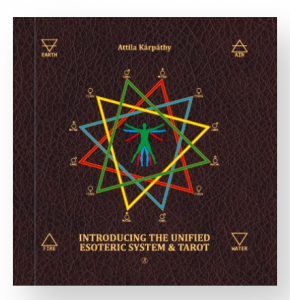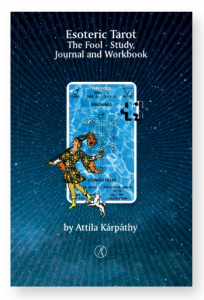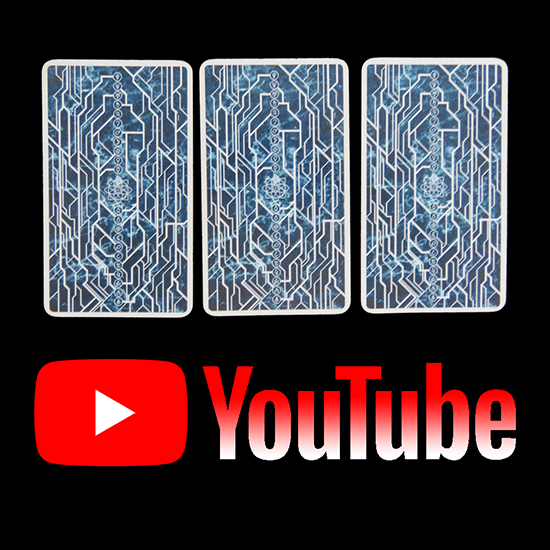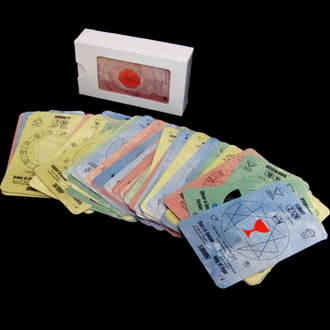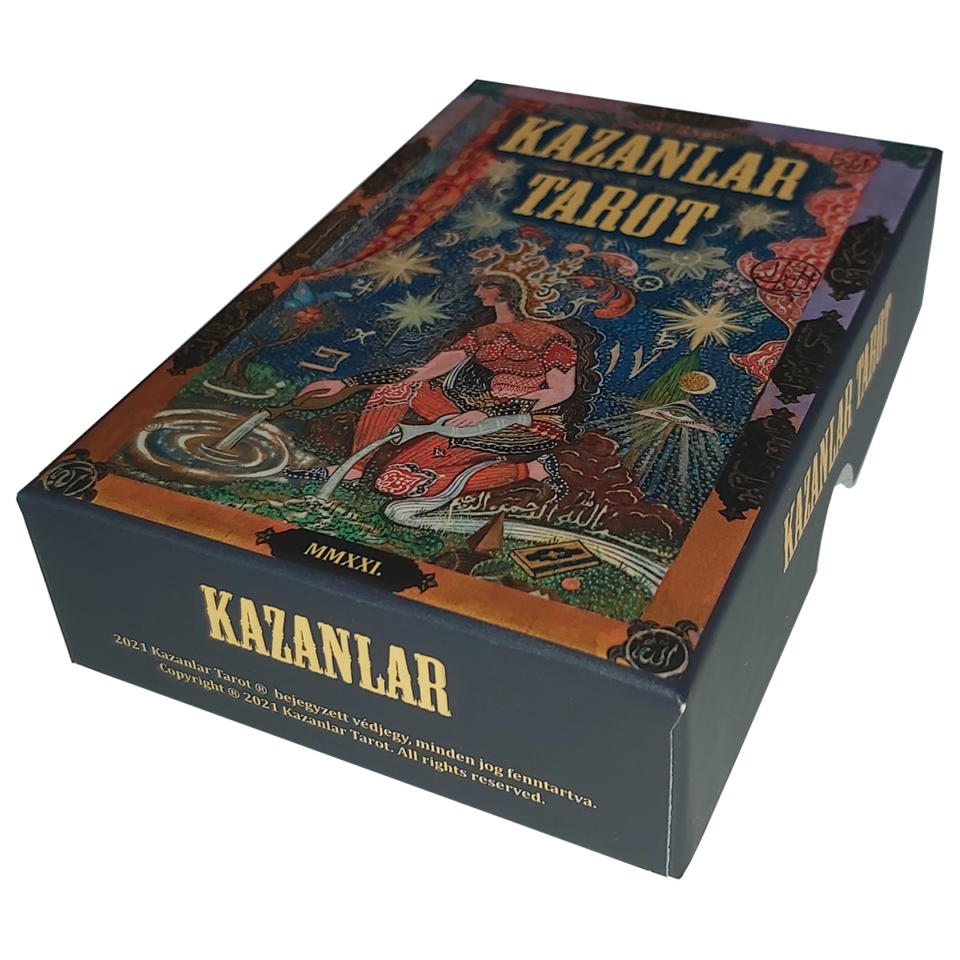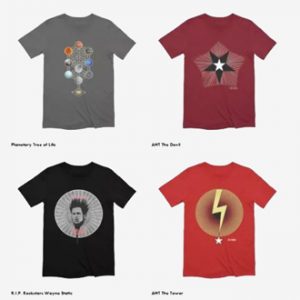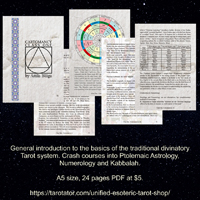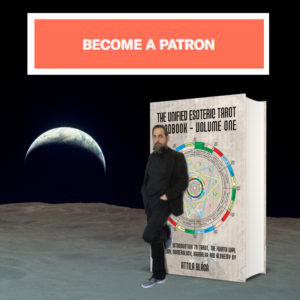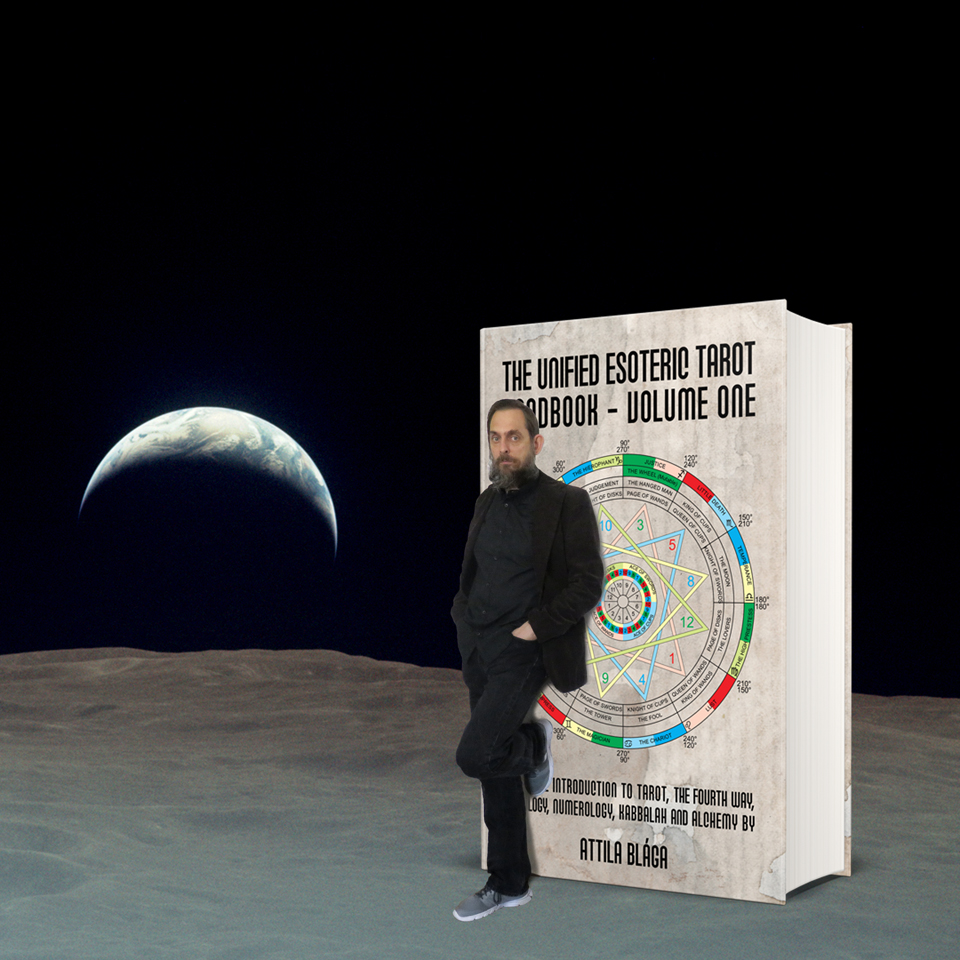
The first volume of the “The Unified Esoteric Tarot handbook” is the result of over twenty-five years of research, study and practice.
The first volume consists of a general introduction to the fundamental esoteric laws and principles, and general notions of Astrology, Numerology, Alchemy, Kabbalah and Tarot. For the first time, these branches of the esoteric science are considered one, complex, unitary system deeply interconnected and not as alternatives but complementary methods of knowledge. This is not a book but a manual.
The manuscript has over 700 pages; it consists of 85 chapters, roughly 137,000 words; has 759 footnotes and 95 illustrations – without the bonus section.
The first volume also introduces the Unified Esoteric Tarot deck, subsequently serving the purpose of the accompanying book for the First Edition.
The aim was to summarise and condense the philosophical and theoretical aspects as much as possible; to keep them simple and refer them to need to know basis.
The theory is the foundation of good practice.
However, my intention was not to offer fried fishes but to teach you how to catch fishes by yourself.
The language of this book is plain English, and I did my best to explain even the most abstract notions in the possibly most accessible way.
I worked all alone, and I did the best I could, but that it is not enough. The book definitively deserves a professional correction, editing and publishing.
I did the entire work all by myself, but I am aware of my limits and shortcomings.
Two more volumes are work in progress, and they will be prepared and hopefully published in the following years.
The second volume deals thoroughly with the Tarot, while the third volume is dedicated to the study of man and the Universe, respectively consists of further accounts on Alchemy and the Fourth Way.
The Great Work is not accomplished overnight, or not even in one lifetime.
For example, I was always felt connected with Etteilla, and I thought that Attila – Etteilla must mean something. Then somebody told me that Attalla/Attallah in Arabic means gift from God.
I felt the same connection with Gurdjieff and several other scholars who put their mind to work for the benefit of all of us. Studying their work generated a powerful connection. Somewhere out there is a “brain in a vat”, and from time to time by conscious effort and perseverance some people may tap into that collective consciousness and extract some precious information that previously was unavailable. Evolution is the result of the conscious and constant struggle. Knowledge is received drop by drop and awakening is achieved step by step. It is a slow and exhausting process. Most of the time the answers to our questions only lead to more question marks. It may seem like an endless road, but this book should provide a trustworthy guide for this search. The time has come to put an “R” in front of the evolution and begun the New Aeon.
Gurdjieff stated: “The conditions for ascending the stairway on the fourth way are that a man cannot ascend to a higher step until he places another man upon his own step. The other, in his turn, must put in his place a third man in order to ascend higher. Thus, the higher a man ascends, the more he depends upon those who are following him. If they stop, he also stops.”
Thank you very much for your support so far, and please, do not stop now, we still have a long way ahead of us.
———————————————————————————
Table of Contents
Preface
Section One
The fundamental esoteric laws and principles
1.1. “As Above, so below”
1.2. The Law of Three
1.3. Mater semper certa est
1.4. Dualism
1.5. The Law of Seven
1.6. Trinity
1.7. The Four
1.8. Seven
1.9. Twelve
1.10. Rational criticism
1.11. Knowledge and understanding
1.12. Intuition versus knowledge
1.13. Intuition and inspiration
1.14. Esoteric, mesoteric and exoteric
1.15. Facts and fiction
Section Two
The Unified Esoteric System
2.1. The link between Tarot and Astrology
2.2. From Ptolemy to Lilly
2.3. The geocentric and the heliocentric model
2.4. The Zodiac Wheel
2.5. The nature of the Planets
2.6. The Four Elements
2.7. The Four Humours or the associated proprieties of the four Elements
2.8. The Three Qualities or Genders
2.9. Seven, eight, nine, twelve Planets
2.10. The Astrological Aspects
2.11. Circles
2.12. The Zodiac Signs
2.13. The Birth Chart and some other key components
2.14. The Houses
2.15. The thirty-six Decans
2.16. Rotation and Time
2.17. The Fixed Stars
2.18. Introduction to Numerology
2.19. Primary sources for Numerology
2.20. Gematria
2.21. Agrippa’s Second Book of Occult Philosophy
2.22. Lévi’s Key of the Mysteries
2.23. W.W. Wescott’s Numbers
2.24. Sepharial and the Numbers
2.25. Cheiro’s Book of Numbers
2.26. The Law of Four also known as Tetragrammaton
2.27. Connecting some dots
2.28. The traits of the Twelve Numbers
2.29. Practical Numerology
2.30. The golden goose chase
2.31. Introduction to Kabbalah
2.32. The Sefer Yetzirah
2.33. The thirty-two mysterious Paths of Wisdom
2.34. My own private Kabbalah
2.35. The Three Pillars or Axis and the Four Worlds
2.36. Keter, the Crown
2.37. The Art of Transformation
2.38. Some basic Alchemical concepts
2.39. The Twelve Steps or Operations
2.40. Sex Magick
2.41. Brain in a vat
2.42. Gurdjieff, Ouspensky and Jeanne de Salzmann
2.43. The Fourth Way
2.44. The Unified Field Theory
2.45. The God’s formula
Section Three
The Tarot: A general introduction
3.1. The Tarot, a snapshot of the Universe
3.2. Tarot what is it and what is it not
3.3. The ancient naming and numbering of the Trumps
3.4. The Golden Dawn system
3.5. The twenty-one Trumps and one wild card
3.6. The architecture of the Tarot deck
3.7. The astrological attributions of the seventy-eight Tarot cards
3.8. The structure of the Tarot deck based on the God’s Formula
3.9. The seven basic human archetypes in the Tarot
3.10. A short overview of all the seventy-eight Tarot cards
3.11. The colour scheme of the Unified Esoteric Tarot deck – Exercise
3.12. Explaining the design of the cards
3.13. How to read with the Unified Esoteric Tarot
3.14. A few practical advice to begin with
3.15. How to ask a Tarot question
3.16. Yes, No, and Maybe type of questions
3.17. Basic three cards Tarot spread
3.18. The Sunrise, five cards spread
3.19. Game of choices, seven cards spread
3.20. Pathfinder, seven cards spread
3.21. Relationship Circle, seven cards spread
3.22. The World Tree spread, seven cards spread with example reading
3.23. The Celtic Cross and the Astro-Tarot – with an example
3.24. The Unified Esoteric Tarot spread, twelve cards spread
3.25. The Romany or Gypsy spread, twenty-one cards spread
Bonus Section
The 78 days Tarot challenge
Appendix. Solstices and Equinoxes 2001 to 2100.
Bibliography.
(Excerpt from the book “The Unified Esoteric Tarot Handbook – Volume One, A general introduction to Tarot, The Fourth Way, Astrology, Numerology, Kabbalah and Alchemy” by Attila Blága. Full or partial use of this text for commercial or non-commercial distribution by any means whatsoever is strictly prohibited unless expressly authorised by the author.)


